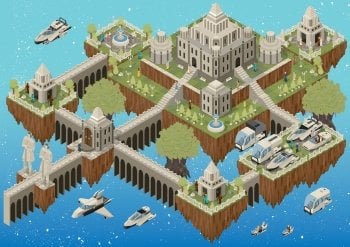Ancient Wisdom for Today's Pupils: The Memory Palace Technique
Students are always seeking for ways to improve their study methods in a world filled with limitless information and digital distractions. Although AI tools and apps are helpful, some of the most effective memory strategies were developed thousands of years ago, long before the advent of paper, the internet, or smartphones.
The Memory Palace Technique, also known as the Method of Loci, is one such timeless technique. Modern pupils are rediscovering this ancient Greek technique, which was formerly employed by philosophers and orators, in an effort to improve their memory, retention, and study efficiency.
Let's see how this potent method operates and how you may begin creating your own mental palace right now.
In the event that The Memory Palace Method: What Is It?
The Memory Palace is a visual memory technique in which you picture putting information inside particular sites of a familiar location, such as your house, school, or even a fictitious structure. Every room, hallway, or corner serves as a "slot" for information, equations, or ideas.
You mentally "walk" through your castle, retrieving information from each spot as you go, whenever you need to remember it.
By turning abstract facts into visual narratives, this approach makes it easier for your brain to process and remember them.
The Science Behind It
Our minds are hardwired for visual and spatial memory, according to cognitive scientists and memory specialists. Places and images are far easier for us to recall than words or numbers.
For this reason:
Although you may recall the layout of your childhood home, you can forget a phone number after just 10 seconds.
Even after all these years, you can still remember where your favorite instructor used to sit.
One of the most effective mnemonic strategies ever created, the Memory Palace, makes use of this spatial intelligence.
Guide to Creating Your Own Memory Palace: Step-by-Step
1. Pick Out Your Palace
Choose a location you're familiar with: your house, school, way to class, or even a fictional universe from a video game. It's all the better the more clearly you understand it.
2. Establish a Route
Imagine yourself going around the area in a predetermined sequence, such as coming in the front door, moving to the living room, then the kitchen, and so forth. This route will be your trip down memory lane.
3. Allocate Information to Locations
Put the facts or ideas you need to remember along this route. Make them unforgettable by using unique, amusing, or colorful imagery. For instance:
Envision a massive sunflower in your kitchen dancing beneath a lamp to help you recall the term "photosynthesis. "
Put a stack of sodium salt by the door and helium balloons floating close to your couch to remember the periodic table.
4. Imagine and Return
Think about going around your castle many times. The more comprehensive and vivid your picture, the more you remember.
Students learn from real-world instances.
History dates: Put historical events in order in your school hall.
Biological words: Designate rooms in your house for specific body systems.
Language acquisition: Use vivid associations to position new vocabulary in certain locations.
Pro tip: For the best long-term retention, combine the Memory Palace with spaced repetition.
Why It Works for Students
Enhances long-term memory
Excellent for retaining lists, sequences, and complicated concepts.
It makes learning fun and creative.
By increasing efficiency, it cuts down on study time.
This approach is used by even the best world memory champions to remember full books, decks of cards, and thousands of numbers.
The students say it works!
"I utilized the Memory Palace to learn 50 words in biology in preparation for my exam. I remembered everything and finished revising in half the time!
— Aisha, a student in medicine
"I no longer fear memorizing because it makes learning enjoyable. "
High School Senior Omar
Additional Advice for Achieving Success
Employ bizarre, over-the-top imagery; the weirder, the better.
Maintain order in each "memory room" to prevent misunderstandings.
To foster relationships, practice walking through your palace frequently.
Blend it with other strategies, such storytelling or chunking.
Thoughts at the End
The Memory Palace demonstrates that ancient knowledge is still relevant in today's education. You only need your creativity to master this approach, which doesn't require any technology or memberships. In a society where attention is split and memories are outsourced to Google, learning this skill can give you a significant cognitive advantage.
Therefore, the next time you need to memorize something, don't just read it again. Create a palace. stroll around it. then claim ownership of that information.


Post a Comment
0Comments